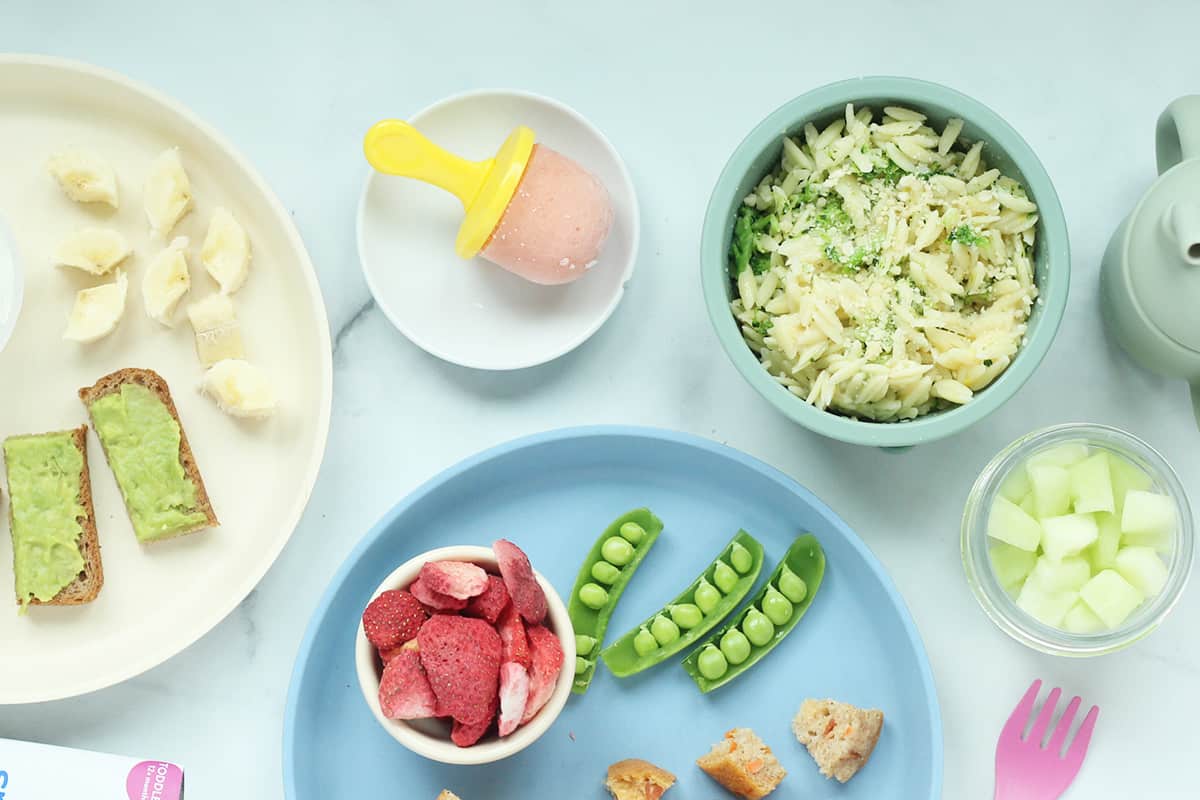To help simplify the process of feeding baby, here are sample baby feeding schedules from newborn to 12 months. Plus, find simple baby meal plans to help, too.
Having a loose feeding schedule can help our days run more smoothly simply because they give us a framework to start with and build on as baby grows. And while flexibility is key for any parent, I’ve found that knowing what to expect and when to expect it can help my state of mind…even when I’m tired from being up with the little one.
Below you’ll find sample infant feeding schedules to start the process of solids with baby. You can adjust as needed for your own life, aim for a range of nutrients and nutrition over the week to reduce pressure on any one meal, and take inspiration from the options shown here.
For older kids, try my sample toddler meal plan. Otherwise, scroll down for information to help.
Your toddler won’t eat? Help is here!
Sign up for our email updates to get tips and ideas sent your way!
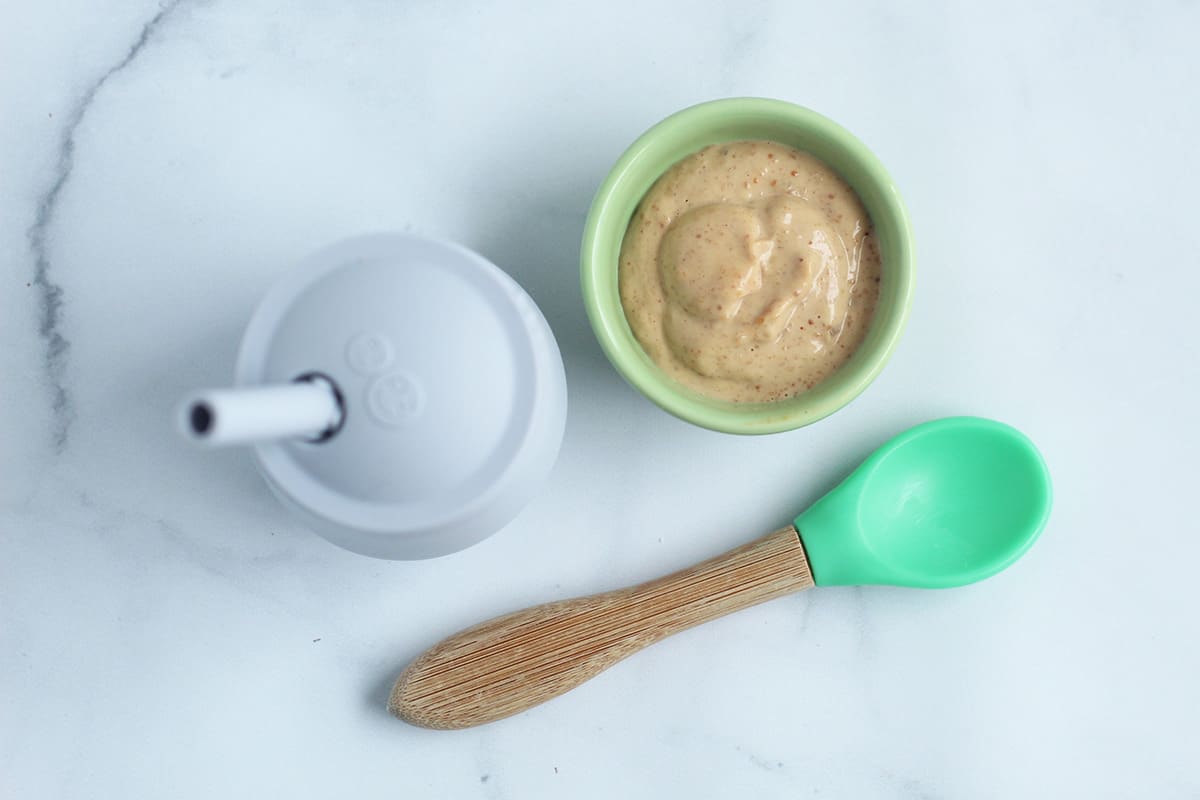
Feeding a Baby from Newborn to 6 Months
From the time that babies are born to about 6 months, the American Academy of Pediatrics recommends that we feed them every 2-3 hours or on demand if breastfeeding—or 2-3 ounces every 3 to 4 hours if formula feeding.
Newborn stomachs are incredibly tiny, so it’s important to remember that babies need to be fed regularly simply because they can’t hold that much formula or breastmilk in their bellies.
By the end of the first month, formula-fed infants may consume closer to 4 ounces every 4 hours. And by 6 months, formula intake may be between 6-8 ounces every 4 or 5 hours.
TIP: Babies don’t always grow exactly like a chart says they will—this goes for both breastfed babies and formula-fed babies—so it’s always best to respect their hunger cues (barring any medical issues, of course). You never know when that growth spurt will hit!
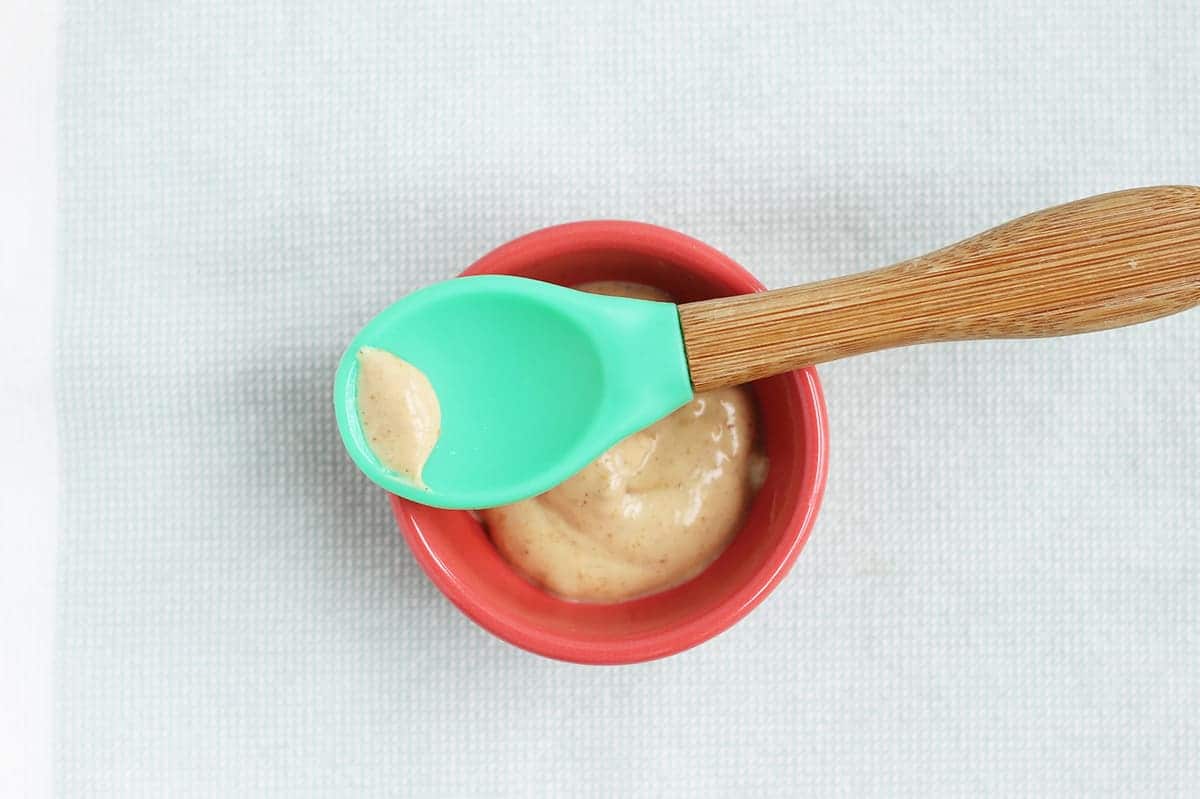
How to Introduce Potential Food Allergens
Around the time your baby starts solids, you need to begin introducing common allergens like peanut, egg, and shellfish. Food allergies have more than doubled over the last generation from 1999 to 2018; today, about 8% of US kids have life-threatening food allergies.
The latest USDA guidelines recommend introducing potential food allergens as soon as we start solids, or around 4-6 months of age, as early and regular introduction has been found to lower the potential for developing a food allergy.
Here’s the latest info in the USDA Dietary Guidelines for Americans 2020-2025:
Potentially allergenic foods (e.g., peanuts, egg, cow milk products, tree nuts, wheat, crustacean shellfish, fish, and soy) should be introduced when other complementary foods are introduced to an infant’s diet. Introducing peanut-containing foods in the first year reduces the risk that an infant will develop a food allergy to peanuts.
If you have an infant who’s at higher risk of a peanut allergy, the recommendation from the National Institute of Allergy and Infectious Disease is to introduce it between 4-6 months, as research has found that can reduce the risk of developing a peanut allergy. Check with your pediatrician for specific guidance.
TIP: Not all food allergies are preventable, but early introduction can help reduce the risk.
Frequently Asked Questions
With food allergies now affecting 1 in 13 children in the US, it’s important to understand what foods typically cause food allergies. According to FARE, there are 9 food groups associated with more than 90% of food allergies: milk, eggs, peanuts, soy, wheat, shellfish, fish and sesame.Food allergies now impact 1 in 13 kids in the United States.
If a baby has or has had eczema, they are at an increased risk for developing food allergies. Family history is important to know too, but 2 out of 3 kids with food allergies do not have a parent with one, so it’s not the whole story.
Research has found that the risk of food allergies actually goes down with regular exposure over the first two years. The AAP recommends introducing potential food allergens soon after starting solids.
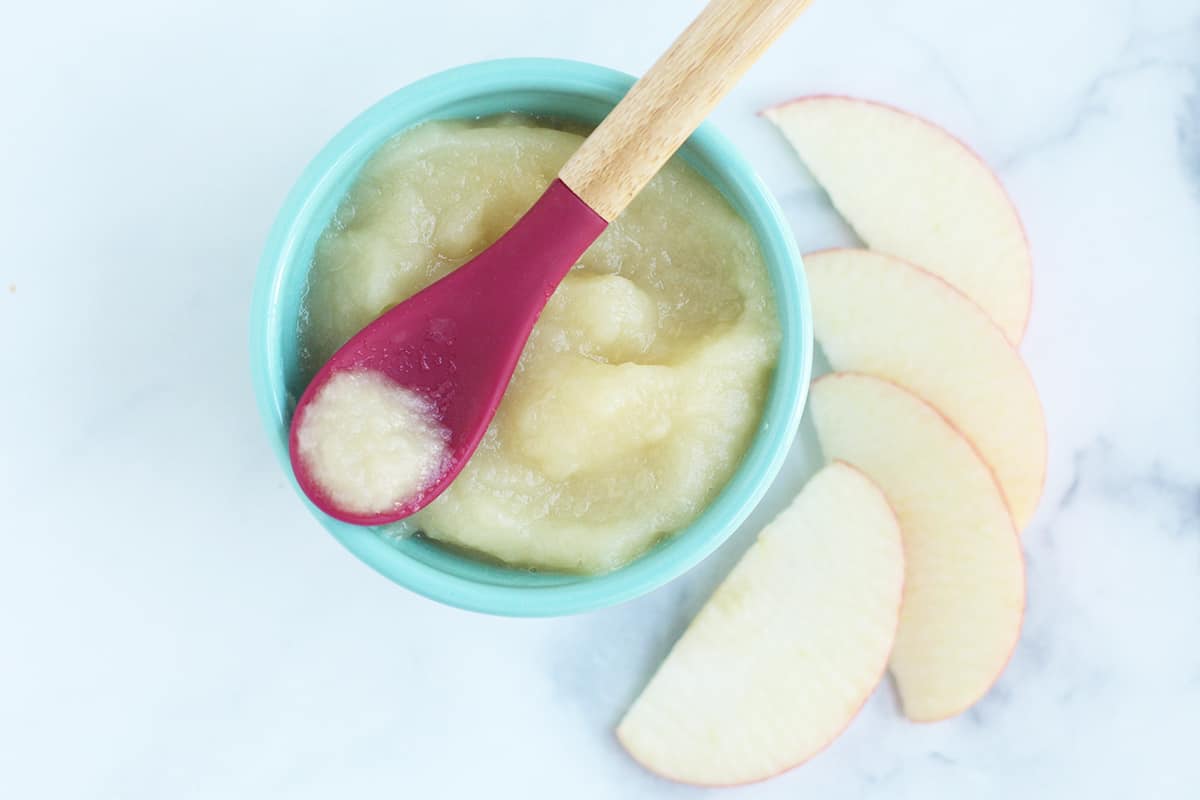
Baby Meal Plan: 6 Months
When first introducing solids, you can start with simple foods to give you a chance to adjust to incorporating baby into meals and also for baby to adjust to this new milestone. Continue offering formula or breastmilk on your same schedule of every 3(ish) hours during the day.
Noon: Apple Puree or BLW-style Roasted Apple Slices
OR
9 am: Peanut Butter Baby Food (an easy protein option) or BLW Banana
TIP: Remember to start serving iron-rich foods and potential food allergens soon after starting solids and follow baby’s fullness cues.
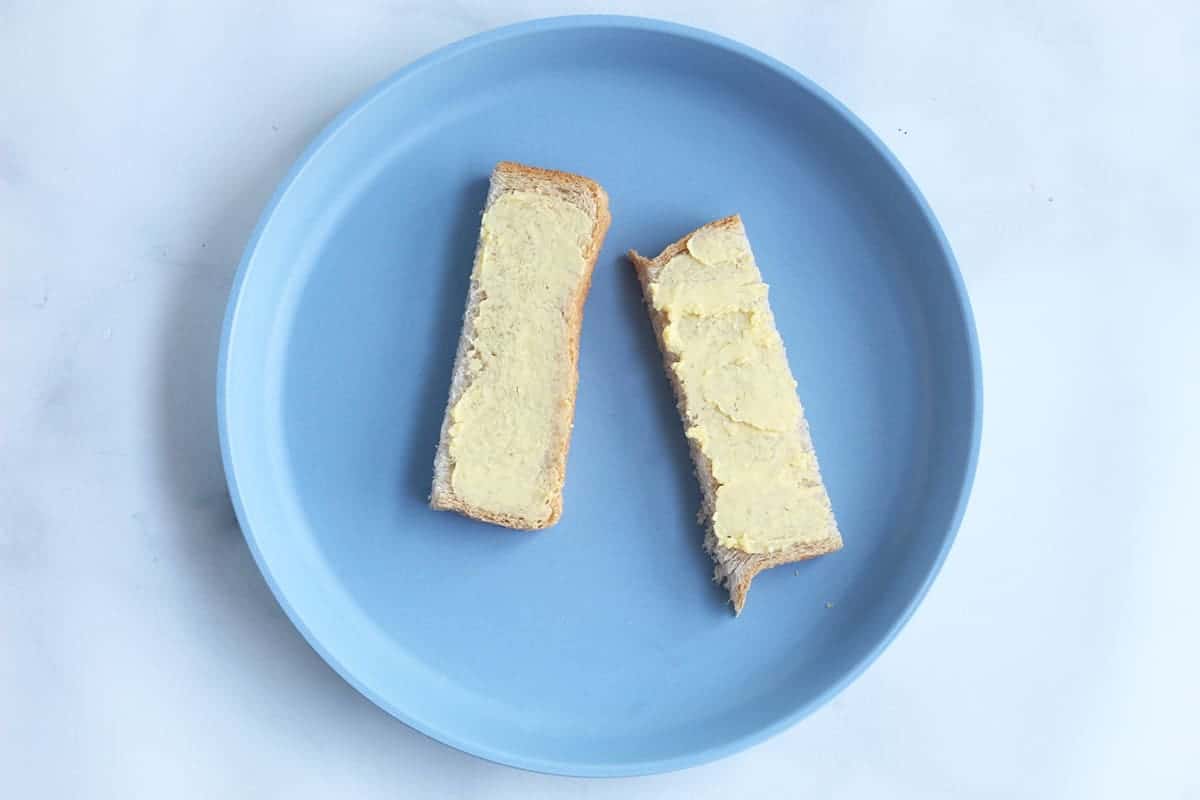
Baby Meal Plan: 8 Months
By this age, baby is usually eating 2-3 meals a day of varied foods. Hunger for solids and appetite may still vary considerably and breastmilk and formula are often still the main source of calories and nutrients offered every 3(ish) hours during the day.
TIP: Check out my favorite Baby Food Combinations, which are perfect for this age.
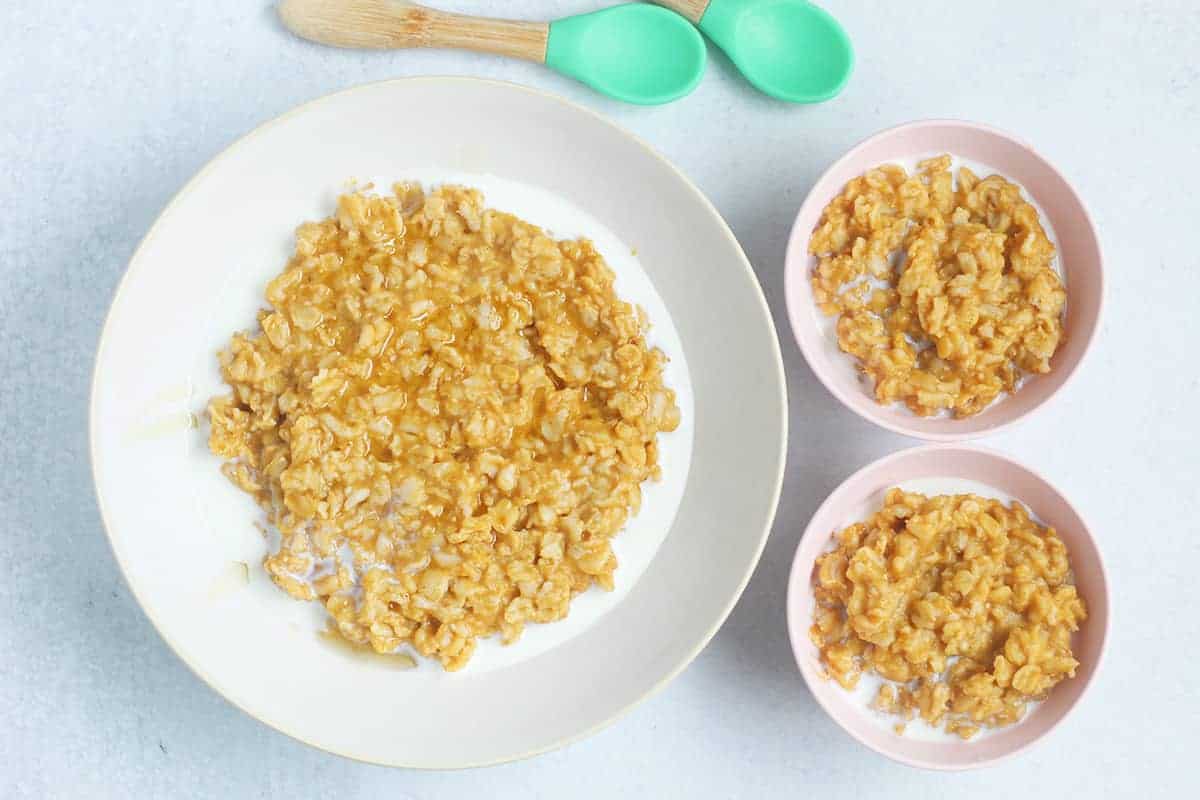
9 Month Meal Plan
Many 9-month-old babies are ready to be eating three main meals a day, so plan to serve them food right alongside your meals. Add snacks (or additional “mini meals”) if they seem hungry for additional solids.
Here’s a sample day of food for a 9-month-old, with bottles or breastmilk offered about every 3 hours during the day as a general routine.
Generally, this age does well with a mix of textures and foods that are diced up into very small pieces.
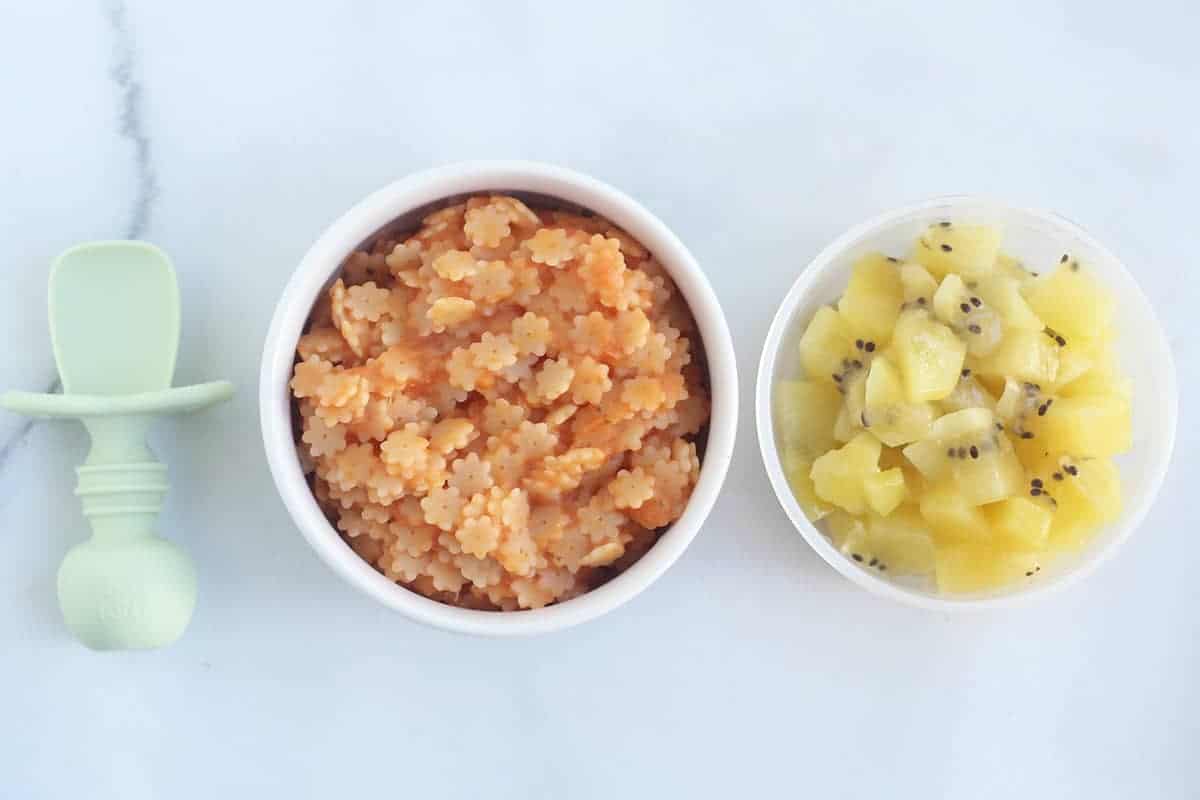
12 Month Meal Plan
By the one year mark, many babies are ready to eat on the same schedule as us, so three meals a day and two snacks. You can, of course, adjust that down if baby is still drinking bottles or breastfeeding, as they may not be hungry enough for snacks—and it may be difficult to fit everything into your schedule.
Around the first birthday is also a great time to start transitioning from formula to cow’s milk and to move from bottles to serving milk in a sippy cup to have at meal times.
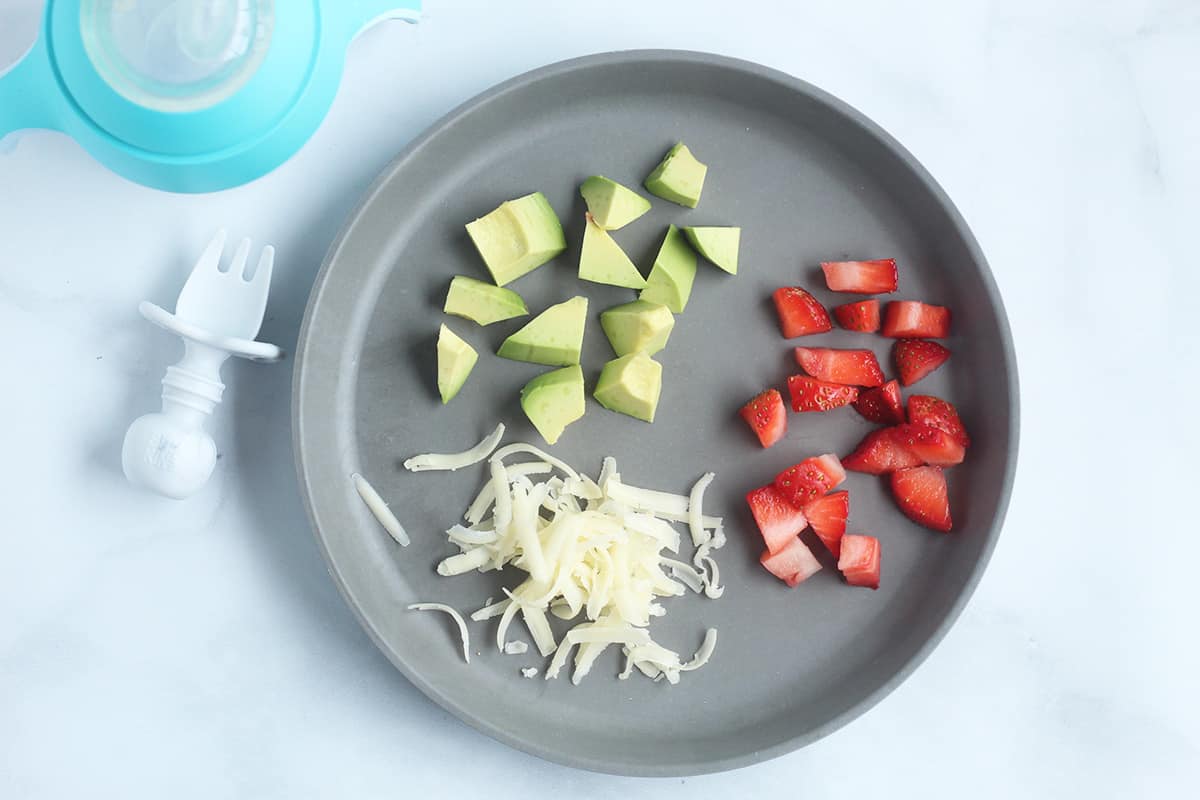
Best Tips for Baby Feeding Schedules
- Remember to always follow and trust baby’s hunger cues. Use these schedules as a framework, in tandem with nursing, breast milk, and/or bottle feeding, but always adjust to your actual baby.
- Check in with your pediatrician when starting solids and food allergens.
- Plan to introduce food allergens soon after starting solids in consultation with your pediatrician.
- If baby has eczema or there’s a family history of food allergies, plan to discuss how to start introducing potential allergens by the 4 month mark.
- Remember that some babies take longer to be hungry for or interested in solid food. There’s no one right baby portion size, so follow your own baby’s cues.
- Sitting with baby and modeling eating can help show baby how to eat and can also be fun!
- Try easy first foods (baby-led weaning style) or my easy Homemade Baby Food ideas.
Related Posts
I’d love to hear your feedback on this post, so please comment below.
This post was first published on April 15, 2021.


